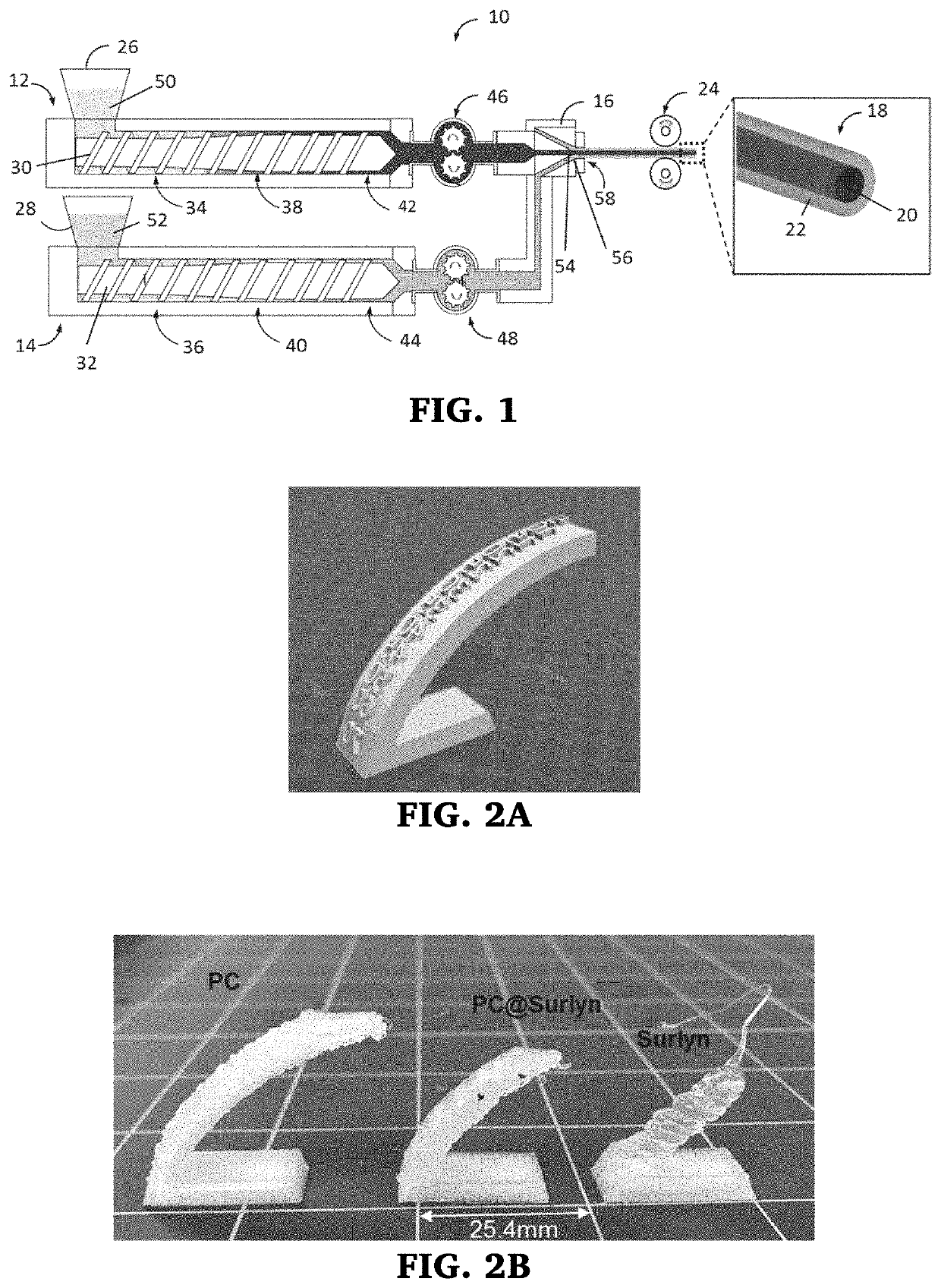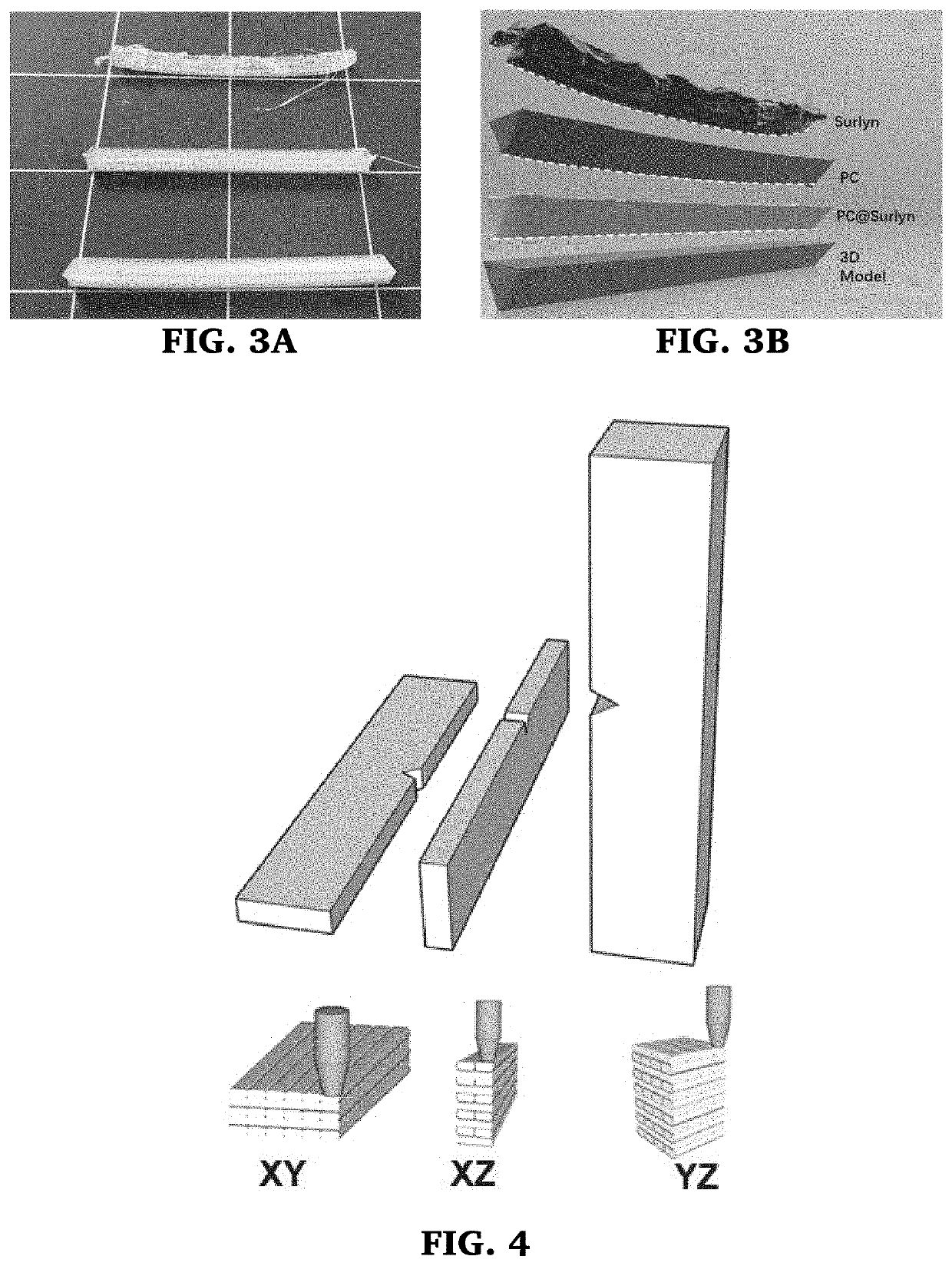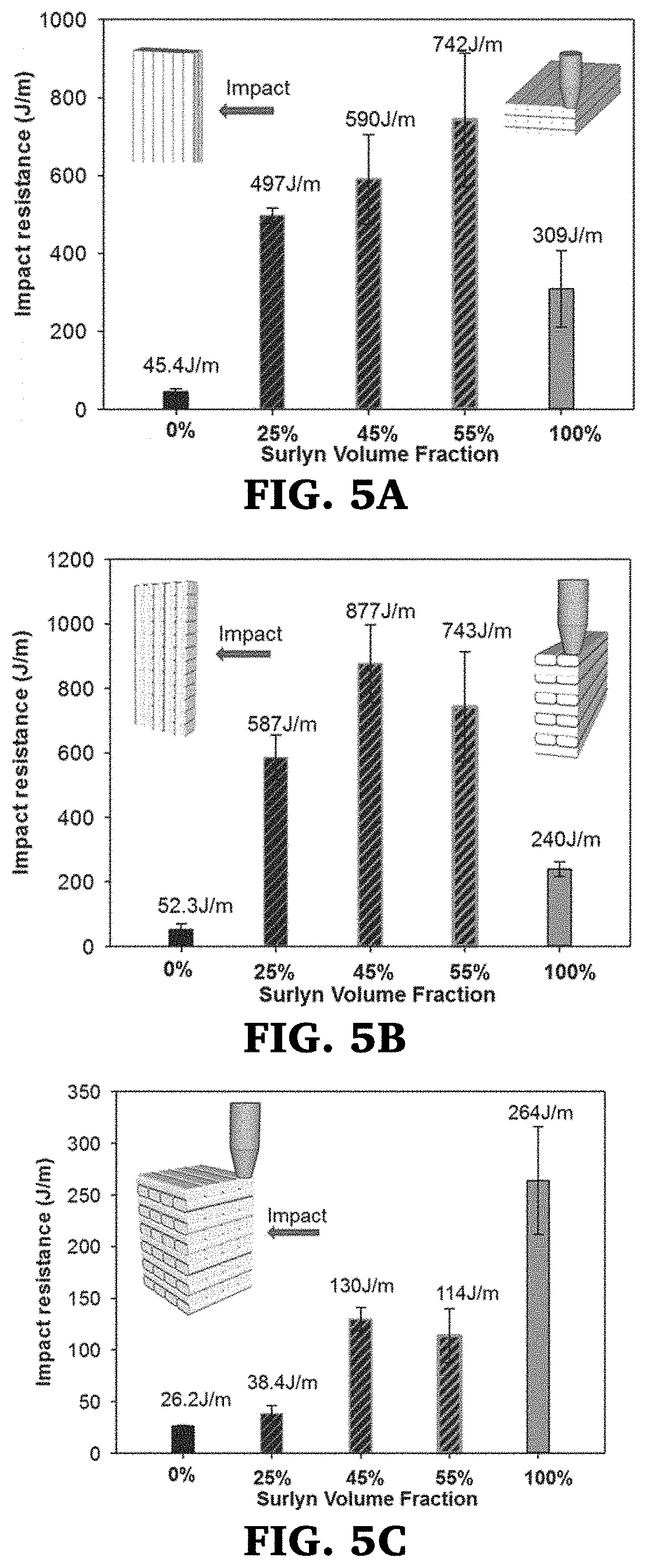Tough, high impact resistant 3D printed objects from structured filaments
a structured filament, high impact resistance technology, applied in the direction of additive manufacturing, conjugated synthetic polymer artificial filaments, manufacturing tools, etc., can solve the problems of limiting the performance of 3d printed parts, weak points at the interfaces of each layer, and limited 3d printing of functional objects, so as to improve interdiffusion of polymers, improve the interdiffusion effect, and reinforce the printed shape
- Summary
- Abstract
- Description
- Claims
- Application Information
AI Technical Summary
Benefits of technology
Problems solved by technology
Method used
Image
Examples
Embodiment Construction
[0036]The following is a detailed description of the disclosure provided to aid those skilled in the art in practicing the present disclosure. Those of ordinary skill in the art may make modifications and variations in the embodiments described herein without departing from the spirit or scope of the present disclosure. Unless otherwise defined, all technical and scientific terms used herein have the same meaning as commonly understood by one of ordinary skill in the art to which this disclosure belongs. The terminology used in the description of the disclosure herein is for describing particular embodiments only and is not intended to be limiting of the disclosure.
[0037]As set forth above, net shape manufacture of customizable objects through 3D printing offers tremendous promise for personalization to improve the fit, performance and comfort associated with devices and tools used in our daily lives. However, the application of 3D printing in structural objects has been limited by ...
PUM
| Property | Measurement | Unit |
|---|---|---|
| Tg | aaaaa | aaaaa |
| Tg | aaaaa | aaaaa |
| Tc | aaaaa | aaaaa |
Abstract
Description
Claims
Application Information
 Login to View More
Login to View More - R&D
- Intellectual Property
- Life Sciences
- Materials
- Tech Scout
- Unparalleled Data Quality
- Higher Quality Content
- 60% Fewer Hallucinations
Browse by: Latest US Patents, China's latest patents, Technical Efficacy Thesaurus, Application Domain, Technology Topic, Popular Technical Reports.
© 2025 PatSnap. All rights reserved.Legal|Privacy policy|Modern Slavery Act Transparency Statement|Sitemap|About US| Contact US: help@patsnap.com



